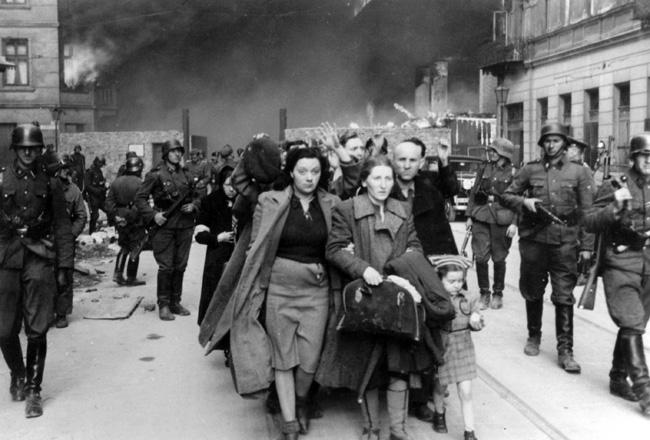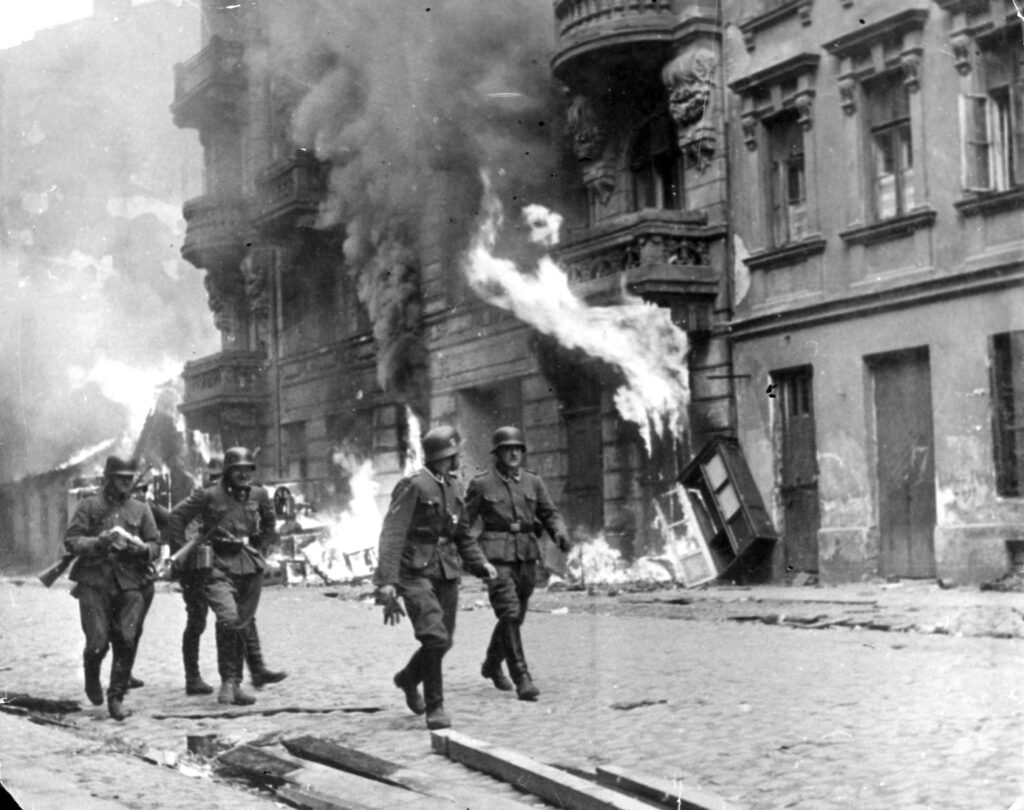The Warsaw ghetto uprising was a brutal revolt in World War II that took place from April 19th until May 16th, 1943. In opposition to the deportation of the remaining Jewish residents of the ghetto to Nazi concentration camps, the Jewish resistance staged an armed revolt. The uprising was the largest single revolt by Jewish people during World War II and inspired other revolts in ghettos and concentrations camps throughout Nazi German-occupied Eastern Europe.

The Warsaw Ghetto
Soon after the German occupation of Poland in September 1939, over 400,000 Jewish people in Warsaw were collected and confined to a densely packed, 3.3 km2 central area of the city. By November 1940, the ghetto was enclosed with brick walls, barbed wire and armed guards who shot anyone attempting the leave. The amount of food and supplies brought to the ghetto was controlled by the Nazis and thousands of Jews died from starvation or disease, even before the mass deportation of Jewish people to concentration camps began.
Other Jewish ghettos were established throughout Nazi-occupied Eastern Europe during the second world war, but Warsaw ghetto was the largest in Poland.
Treblinka Extermination Camp
In July 1942, the leader of the Schutzstaffel (SS), Heinrich Himmer, ordered the Jewish residents of the ghetto to be transported to concentration camps in what was described as the “resettlement to the East.” This term was a Nazi euphemism for misleading Jews in believing that they were being transported to labor camps. However, it soon became known in the ghetto that deportation to the camps meant inevitable death.
After two months, around 265,000 Jewish people had been deported from the Warsaw ghetto to the Treblinka concentration camp. Over 20,000 others were transported to forced-labor camps or were killed during transportation.
Around 55,000 to 60,000 were estimated to have remained in the Warsaw ghetto. The surviving residents formed small groups of underground resistance units such as the Jewish Combat Organization and ZOB, which were able to smuggle in a small supply of weapons from anti-Nazi Poles.
On January 18th, 1943, the Germans began their second deportation of the Jews, which led to the first instance of armed revolt inside the ghetto. As the Nazis entered the ghetto to round up the Jews, they were met with resistance and were ambushed by the fighter units. Hundreds of people in the Warsaw ghetto fought the Nazi’s, armed with handguns and other weapons. Despite the resistance groups suffering heavy losses, the Germans also took many casualties and as a result, deportation was halted for the following few months. Instead of the plan to deport 8,000 Jews, only 5,000 were eventually removed.
The Uprising Begins
On 19th April 1943, on the eve of Passover, Himmler sent the SS auxiliary forces and police into the ghetto. Armed with tanks and heavy artillery, the plan was to complete the deportation action and liquidate the ghetto within three days. However, once inside, they were ambushed by several hundred resistant fighters, who despite being outnumbered in both manpower and weapons, managed to fight the Germans for almost a month, delaying their advance.
However, during that period, the Germans systematically destroyed the buildings in the ghetto, obliterating the bunkers where many Jewish residents had been hiding. Thousands of Jews were killed or captured in the process.
By May 16th, 1943, Warsaw ghetto was back under full Nazi control. The action to suppress the uprising officially ended by the Germans with a symbolic act of blowing up the Great Synagogue of Warsaw.
7,000 Jews were estimated to have perished during the Warsaw ghetto uprising, while the 50,000 survivors were deported to concentration camps. The Germans were also estimated to have lost several hundred men during the revolt.
The Jewish resistance did not consider their actions as an effective means to save themselves, but rather as a symbolic battle in honor of the Jewish people, and a protest against the world’s silence and inaction.


